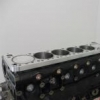Rb34 / 24U (Rb26 + 800Cc) - Project RB high deck engine (and related builds)
Announcements
-
Latest Posts
-
By drifter17a · Posted
does anyone know tie rod torque setting and anti roll bar for r34? Is there a workshop which shows various components torque setting? -
By drifter17a · Posted
Hi have purchased pair of eibach wheel spacer as I couldn’t fit set of wheels I bought for my car due to it catching caliper. I know I need to cut the bolts on my discs so they sit flush with the nut supplied but the nut doesn’t sit all the way into the groove meaning wheel would not directly fit onto the spacer rather the nuts. Any thoughts? See pic https://ibb.co/VJK5w5G -
Nah. There's not shit tonnes of pressure in there. Just drill with a 1.5mm drill or something equally tiny. When the drill goes all the way through thee gas will start to come out, but with such tiny path through the flutes of the drill bit, it won't be at all dangerous. You can be as paranoid as you like from then on. I'd just pull the drill out while keeping my face out of the line of fire. But then, I spend half my time looking into pressurised furnaces. So my risk acceptance is somewhat higher than most!
-
By Dose Pipe Sutututu · Posted
Been needing a new clutch for a while, but holding off because of life tingz and adulting. But... Being of Asian descent, I can't pass on a good sale, especially everyone else is selling it for $2k+ (JJR has it for $1799). Really on the fence on this one, because the unsprung version of this is $1281 via Shitbox (Sparesbox) and the sprung version is quite a bit more (no idea why Shitbox doesn't offer them). Ending up just sending it and getting the twin sprung organic. Mainly because I wanted the car to be nice to drive and didn't want to make it more of a shitbox than it already is. -
It was the pressure I was worried about. @GTSBoy does drilling them pose any problems?
-




Recommended Posts
Create an account or sign in to comment
You need to be a member in order to leave a comment
Create an account
Sign up for a new account in our community. It's easy!
Register a new accountSign in
Already have an account? Sign in here.
Sign In Now